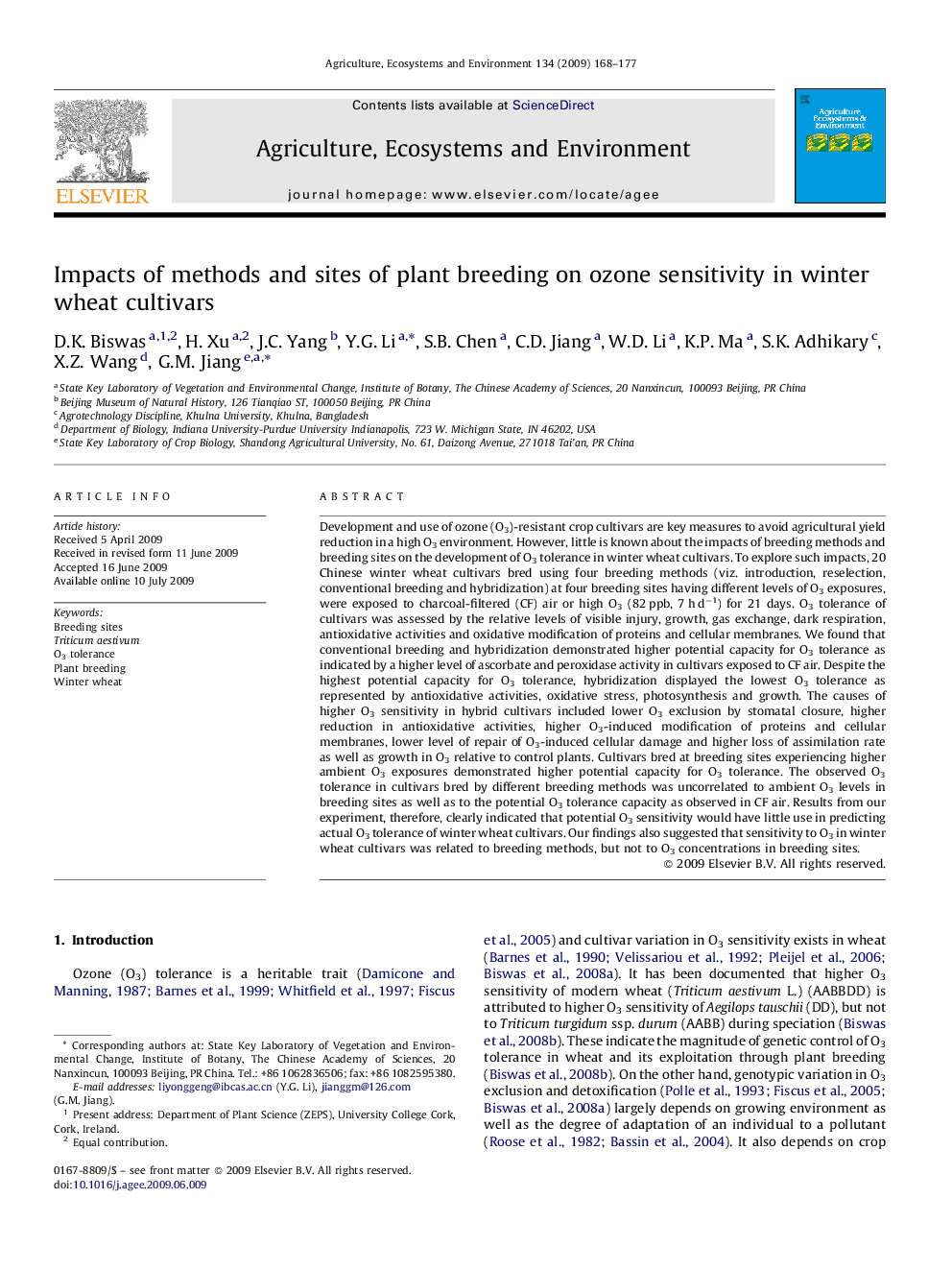| کد مقاله | کد نشریه | سال انتشار | مقاله انگلیسی | نسخه تمام متن |
|---|---|---|---|---|
| 2415258 | 1552120 | 2009 | 10 صفحه PDF | دانلود رایگان |

Development and use of ozone (O3)-resistant crop cultivars are key measures to avoid agricultural yield reduction in a high O3 environment. However, little is known about the impacts of breeding methods and breeding sites on the development of O3 tolerance in winter wheat cultivars. To explore such impacts, 20 Chinese winter wheat cultivars bred using four breeding methods (viz. introduction, reselection, conventional breeding and hybridization) at four breeding sites having different levels of O3 exposures, were exposed to charcoal-filtered (CF) air or high O3 (82 ppb, 7 h d−1) for 21 days. O3 tolerance of cultivars was assessed by the relative levels of visible injury, growth, gas exchange, dark respiration, antioxidative activities and oxidative modification of proteins and cellular membranes. We found that conventional breeding and hybridization demonstrated higher potential capacity for O3 tolerance as indicated by a higher level of ascorbate and peroxidase activity in cultivars exposed to CF air. Despite the highest potential capacity for O3 tolerance, hybridization displayed the lowest O3 tolerance as represented by antioxidative activities, oxidative stress, photosynthesis and growth. The causes of higher O3 sensitivity in hybrid cultivars included lower O3 exclusion by stomatal closure, higher reduction in antioxidative activities, higher O3-induced modification of proteins and cellular membranes, lower level of repair of O3-induced cellular damage and higher loss of assimilation rate as well as growth in O3 relative to control plants. Cultivars bred at breeding sites experiencing higher ambient O3 exposures demonstrated higher potential capacity for O3 tolerance. The observed O3 tolerance in cultivars bred by different breeding methods was uncorrelated to ambient O3 levels in breeding sites as well as to the potential O3 tolerance capacity as observed in CF air. Results from our experiment, therefore, clearly indicated that potential O3 sensitivity would have little use in predicting actual O3 tolerance of winter wheat cultivars. Our findings also suggested that sensitivity to O3 in winter wheat cultivars was related to breeding methods, but not to O3 concentrations in breeding sites.
Journal: Agriculture, Ecosystems & Environment - Volume 134, Issues 3–4, December 2009, Pages 168–177